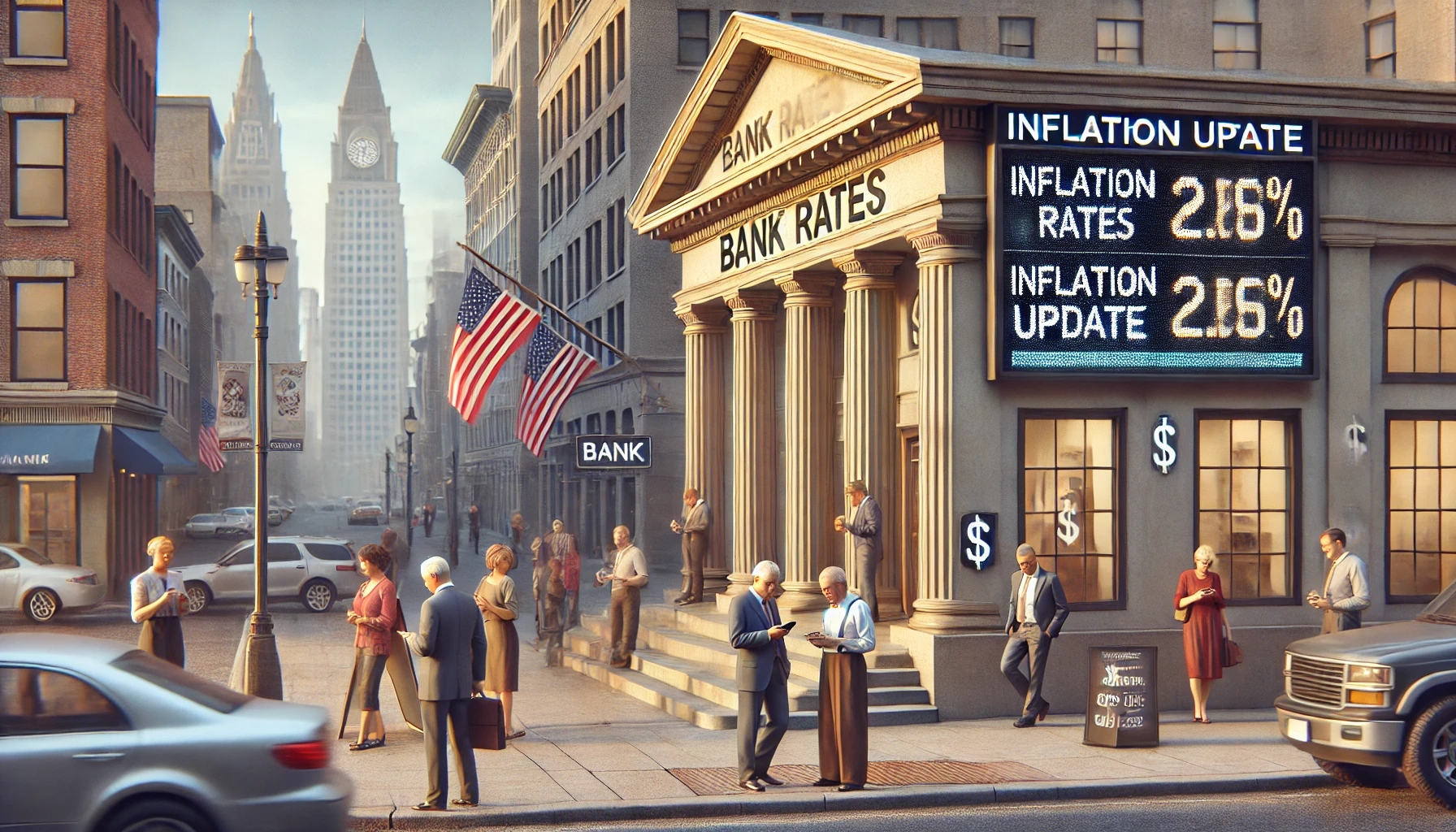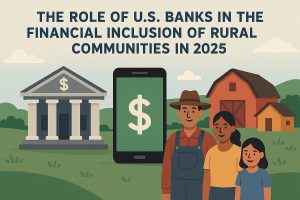Inflation is one of the most discussed economic indicators in the world, and the United States is no exception. Its impact goes far beyond supermarket prices, reaching various sectors of daily life and influencing consumer behavior. When inflation rises, it triggers a chain reaction that starts in the financial system, directly influencing banking rates, loans, financing, and even credit cards, reshaping how Americans manage their money.
For a consumer, it is very important to understand how inflation relates to banking rates, thus enabling more informed and conscious decisions. But how to do this effectively in a changing economy? Observing interest rates can be the starting point for you to organize your budget in a smarter way. This way, you can take advantage of the best market opportunities even in times of economic instability and financial uncertainty.
What is inflation and why does it affect the banking system so much?

Inflation is simply the continuous increase in the prices of goods and services over time. But what does this mean? It means that if it rises, the purchasing power of the currency decreases, requiring more dollars to buy the same product or service as before. In other words, our money loses value. When this happens, it generates great concern among financial institutions and consumers, as everyone needs to adjust their strategies for financial protection.
But how does this affect the banking system? Well, when they lend money, they expect to receive it back. When inflation is high, the value they will receive in the future is likely to be less than what was lent, and this causes rates to be raised to compensate for this loss. Thus, these adjustments directly impact consumers who depend on credit.
How do banks react to high inflation?
As seen earlier, the banking response to inflation is to increase interest rates. But why does this happen? Because with high inflation, our money has become more expensive. The Federal Reserve (central bank) often raises benchmark rates during inflationary periods, which influences the entire banking sector.
This action attempts to decrease consumption by encouraging the population to save more than spend, making loans less attractive and savings more appealing. Because if this happens, the trend is for inflation to decrease. How so? If there is less money circulating, prices will be less inflated. However, this directly impacts those who already have debts, requiring more planning and financial control.
We have put together a table showing the different products offered by banks and how they are impacted by inflation. The increase in rates is visible and affects both those who take credit and those who invest or save, changing the dynamics of consumption and household planning.
| Banking Product Type | Average Rates Before Inflation (2020) | Average Rates During High Inflation (2025) |
| Credit Card | 16.0% per year | 24.37% per year |
| Personal Loan | 9.5% per year | 12.3% per year |
| Mortgage | 3.0% per year | 6.88% per year |
| Savings Account (Return) | 0.5% per year | 2.45% per year |
Credit cards: The most immediate reflection on your wallet
The first sign of inflation is felt directly on credit cards. This is because their rates are generally variable, following the information from the Federal Reserve. In inflationary times, annual rates can exceed 20%, making the use of credit cards even more expensive.
Another point that also becomes significant is delinquency. With rising prices and increasingly expensive credit, many people compromise their financial health to maintain the same lifestyle. To prevent this from happening, it is ideal to reduce the use of revolving credit and prioritize paying the full bill to avoid high interest rates.
Adopting strategic measures can help consumers get through periods of inflation without compromising their budget. Conscious use of credit cards becomes even more important in times of high interest rates. Therefore, we have made some tips that you can follow to avoid getting squeezed in these moments:
| Strategy | Direct Benefit to Consumer |
| Switch to fixed-rate cards | Avoids surprises during periods of high inflation |
| Prioritize cashback cards | Partially compensates for price increases on expenses |
| Pay the full bill | Eliminates revolving interest, which grows with inflation |
| Negotiate rates with the bank | Possible individual adjustment based on credit profile |
What is the Federal Reserve’s role in controlling inflation?
The Federal Reserve works as a regulator of the financial system, and one of its functions is to control inflation. But how does it do this? It adjusts the benchmark interest rate, which will influence all banking rates in the country. This is because when this rate rises, the trend is for financial institutions to pass this increase on to their customers.
Although this action is hated by all types of customers, from consumers to companies, it is very important in combating inflation. Despite creating a difficult environment for purchases, it is necessary to ensure long-term stability. That is why it is important to understand how these central bank actions work to be able to adapt more consciously.
Conclusion
The relationship between banking rates and inflation in the United States is completely inevitable. When prices rise, there is nowhere to run. The Federal Reserve will adjust the benchmark rates to try to balance the economy, and your bank will pass this rate on to you. With average credit card rates exceeding 24% in 2025, attention to financial management has become even more essential.
For consumers, this means much more than just interest. High rates mean more limited and expensive access to credit, as well as the need for reorganization in the family budget. However, thinking about investing in products that are linked to interest rates can be a great long-term opportunity. Therefore, financial education is so necessary, and knowledge can be a differential when dealing with inflation without compromising financial health.
Therefore, in this scenario, it is important to understand how the banking system works and the role of inflation in financial decisions. In this way, seeking more profitable alternatives and having an emergency reserve are attitudes that help protect yourself in these challenging times. With clear information and conscious choices, it is possible to get through periods of inflation with safety and balance.






